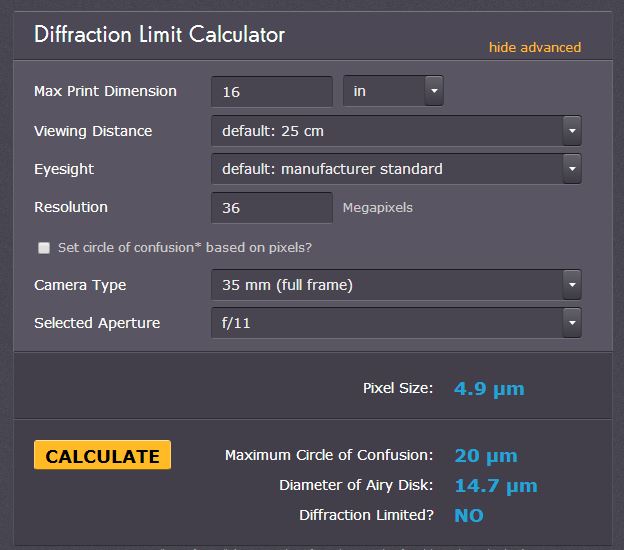 Originally posted by dtmateojr
Originally posted by dtmateojr 
Ok I think his graph shows lpcm (still no axis labels there so who knows). Which means a good lens should hit 1680 at f5.6. He did not even get to 1000 which is consistent with the results of the sharpening jokers. His second graph went a bit past 1000 but still not good enough. And that's why you do not see a "sharp" drop in resolution going from f5.6 to f8 to f11 because the lens is already incapable of fully utilizing the sensor even at f5.6. Imagine if at f5.6 the resolution was at 1500

I'm not quite sure how to take this comment - are you saying that Roger's bench testing is incorrect, or that the lens is so 'bad' so it's not showing the effect you expected to see?

The 50mm in question is a pretty standard lens, ie it resolves quite well stopped down and isn't going to be an outlier in any way. Roger's team tests hundreds of lenses per year as part of their business, so he's going to know if something is giving 'bad' results right away. That link also has a few other lenses tested, all showing the same thing - 36MP giving more resolution than the lower-MP sensors at the same apertures, and past your f/11 point.
Here's a statement by
Joseph James : "
A common myth is that smaller pixels suffer more from diffraction than larger pixels. On the contrary, for a given sensor size and lens, smaller pixels always result in more detail. That said, as we stop down and the DOF deepens, we reach a point where we begin to lose detail due to diffraction softening. As a consequence, photos made with more pixels will begin to lose their detail advantage earlier and quicker than images made with fewer pixels, but they will always retain more detail. Eventually, the additional detail afforded by the extra pixels becomes trivial (most certainly by f/32 on FF)."
The bolded sentence describes what you see when you plot the resolution as Roger Cicala did and DXOmark did in the earlier plot I posted - the slope of the curve gets a little
steeper with the higher-MP sensor past the MTF peak (meaning it loses resolution slightly faster,) but it never
intersects the lower-MP curve until very low apertures, and not at f/11 with any of those tested lenses. Meaning, as Joseph says - it always resolves more. Past about f/16 with most lenses, the difference is going to be pretty small, and there's probably no difference between any sensor + lens at f/32, as Joseph says.
If you want to imagine perfect lenses only** and concentrate on just the Airy disk diameter vs. pixel size, you still are not seeing anything bad at f/11 at even large prints (16'' on long side in example below) and pretty close viewing distances (25cm)

(from
here)
** and by the way, how are you defining 'perfect lens'? A perfect lens has traditionally been described as one that is sharpest wide-open, that does not suffer from any aberrations at all wide open and thus is 'diffraction limited' at maximum aperture. You mention a 'perfect lens' being diffraction limited at some other aperture, and that breaks the definition of 'perfect lens'. Just an aside.
.
---------- Post added 02-24-14 at 06:23 PM ----------
 Originally posted by dtmateojr
Originally posted by dtmateojr 
Of course airy discs throw away info. That is basically the effect of diffraction. Claiming that you can resolve past hard limits of diffraction is the fault of your argument. The obviously unscientific "findings" that were posted (borderline magic) are funny at best. I can't believe that you believe them.
I don't see anywhere where anyone said details completely lost to diffraction were somehow recoverable, if that's what you were implying, I saw where someone said MTF can be affected by sharpening. (You don't disagree with that, do you?

)
By the way, that person's methods and data is available if you want to contact them on that link.
 View Poll Results: What sensor do you like best? (Sony)
View Poll Results: What sensor do you like best? (Sony) 

 Similar Threads
Similar Threads 












 Post #15 by Jonathan Mac
Post #15 by Jonathan Mac








